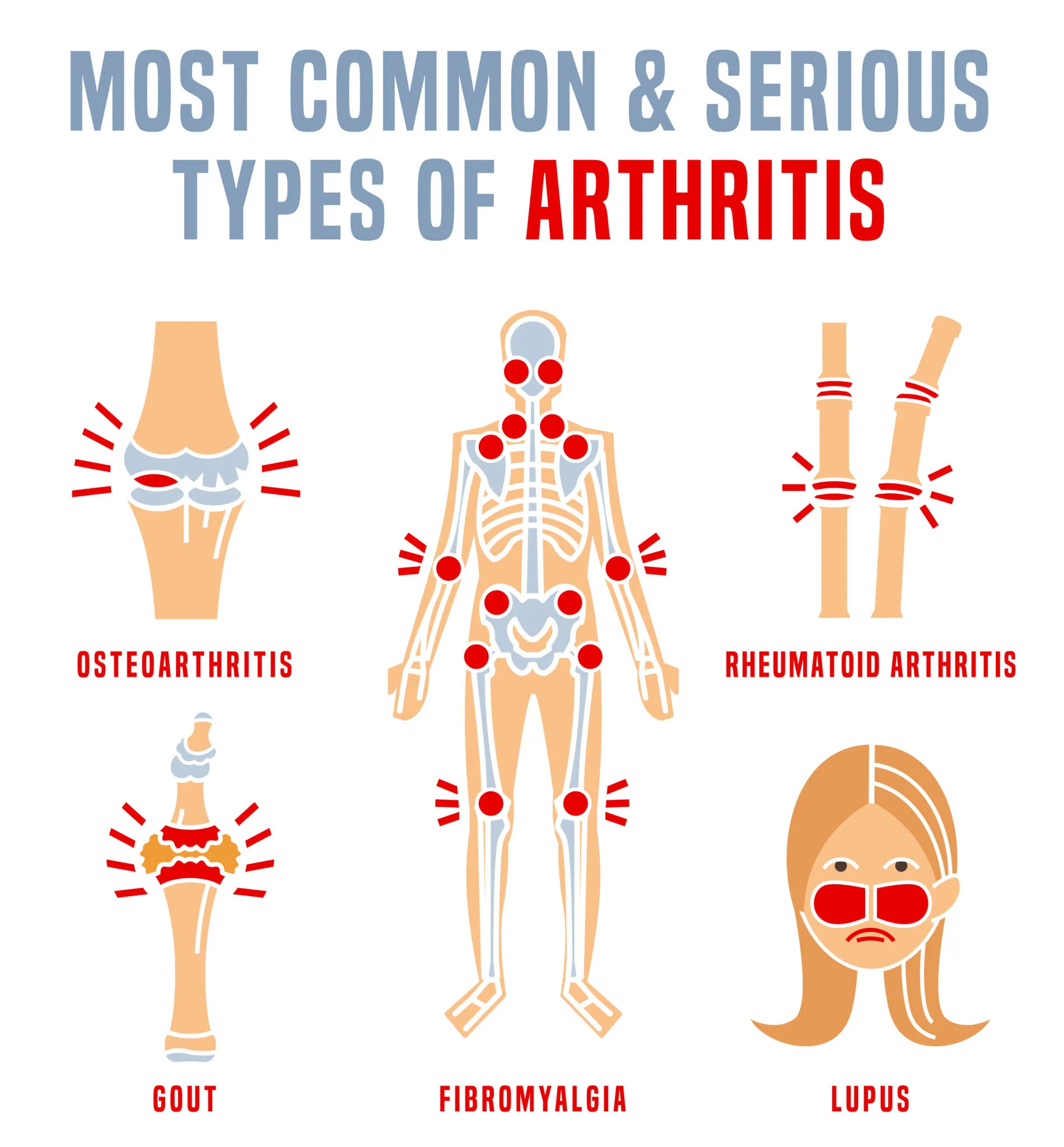In order to understand what the various forms of arthritis are, you need to first understand the differences between autoimmunity and autoimmune disease. An autoimmune disease involves the activation of the body’s own immune cells to attack its own healthy tissue. For example, lupus is an autoimmune disease that causes inflammation in multiple organs throughout the body.
Another form of autoimmunity involves foreign bodies getting inside the cell and triggering it to produce antibodies. This is known as antigen-driven autoreactivity and is caused by infection with viruses, bacteria, fungi or parasites. A type of arthritis called rheumatoid arthritis (RA) can be triggered by such antigens entering the joints.
There are many other forms of arthritis, including gout, which occurs when uric acid crystallizes in joint tissues, causing pain, swelling, and disability.
Osteoarthritis
Osteoarthritis is a condition that affects the joints in your body. The main symptoms include pain and stiffness in the affected joint area, as well as difficulty moving around. There are two different forms of osteoarthritis: primary and secondary. Primary osteoarthritis occurs when the cartilage between the bones becomes damaged. This makes the bones rub together, causing pain. Secondary osteoarthritis develops after an injury to one of the joints.
There are many ways to treat osteoarthritis, including medication, physical therapy, and surgery. If you want to learn more about this disease, then read on.
Types of Arthritis
Primary: When the cartilage that separates the ends of bones wears down, the bones may start rubbing against each other. This causes friction and can cause discomfort or even serious damage to the bone.
Secondary: As a result of an injury, the ligaments in the knee become torn. The cartilage that covers these ligaments also begins to wear down. This allows the bones to move closer together, resulting in painful swelling.
Rheumatoid Arthritis
Rheumatoid arthritis is an autoimmune disease that affects the joints. This means that the body attacks its own tissues. If you have rheumatoid arthritis, you might be able to control the symptoms by taking medication. However, you may still need surgery in order to repair damaged tissue.
There are three main types of arthritis: osteoarthritis, gout, and rheumatoid arthritis. Osteoarthritis is the most common form of joint pain. Gout is a type of inflammatory disorder where uric acid builds up in the joints. Finally, rheumatoid arthritis is a chronic condition that causes inflammation in the synovial fluid that surrounds the bones and connective tissues.
If you’re suffering from any kind of arthritis, then you should know that there are a few different ways to treat it. You can take anti-inflammatory drugs, such as ibuprofen or naproxen. In addition, you may also want to try an exercise program to help strengthen your muscles.
Gout
There are several different kinds of arthritis. Some people suffer from osteoarthritis, while others have rheumatoid arthritis. If you’re interested in learning more about these conditions, you can read this article.
Osteoarthritis is a condition that causes inflammation in the joints. It’s most commonly found in the hips, knees, and feet.
Rheumatoid arthritis affects the entire body. This means that it can cause pain in the hands, fingers, wrists, elbows, shoulders, neck, back, and other parts of the body.
While both types of arthritis can be painful, gout is the only type that involves uric acid crystals. When you get gout, you’ll notice redness and swelling around your joint. You may also feel extreme heat and discomfort.
Gout attacks usually happen when you eat foods that contain purines. Purines are chemicals that occur naturally in the human body.
Psoriatic Arthritis
Arthritic conditions can affect anyone at any age. If you have psoriasis, you may be surprised to learn that you’re more likely than most people to develop an arthritic condition. That’s why it’s important to know the different kinds of arthritis so that you’ll understand how your body reacts to them.
There are two main forms of arthritis: rheumatoid and osteoarthritis. Rheumatoid arthritis is caused by a disorder of the immune system. Osteoarthritis affects the joints and can lead to pain and stiffness. Both of these conditions cause inflammation in the joints.
Psoriatic arthritis is another form of arthritis that develops in people who suffer from psoriasis. This disease causes swelling in the skin, and it also leads to joint damage.
If you develop one of these three diseases, you may need to take medication to control the symptoms. But there are many other ways to treat the problem as well.
Ankylosing Spondylitis
Arthritis is a condition that affects your joints. You may have heard of osteoarthritis, rheumatoid arthritis, gout, lupus, psoriatic arthritis, etc., but did you know that there are many different kinds of arthritis? Each type of arthritis causes pain in the joints, so it’s important to understand each one before deciding on treatment options.
Osteoarthritis (OA) is the most common form of arthritis. OA occurs when cartilage breaks down and begins to rub against bone in certain parts of your body. This creates friction and pressure, causing inflammation and pain. The symptoms of OA include joint stiffness, swelling, tenderness, and loss of motion.
Rheumatoid Arthritis (RA) is another kind of arthritis that involves inflammation. RA can occur at any age, although it’s more common among women than men. If you have RA, your immune system attacks your own cells, resulting in a variety of painful symptoms including fatigue, fever, swollen hands or feet, stiff joints, and even heart problems.
Conclusion
Arthritis can be a very painful condition. If you have been diagnosed with this problem, you might want to read the article below. This is a guide that will help you understand more about the different types of arthritis.
If your doctor tells you that you have either of these problems, then you should learn as much information as possible. The more you know, the better prepared you’ll be to deal with your situation.

